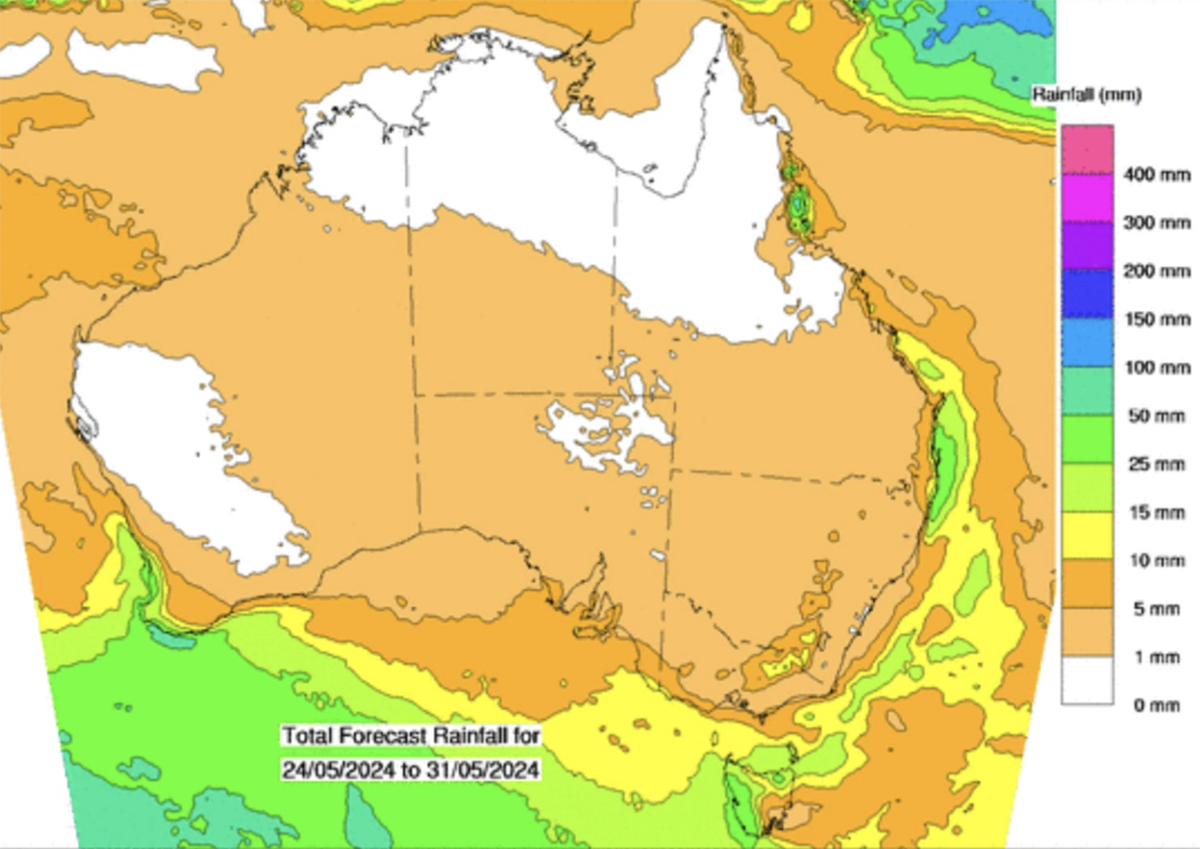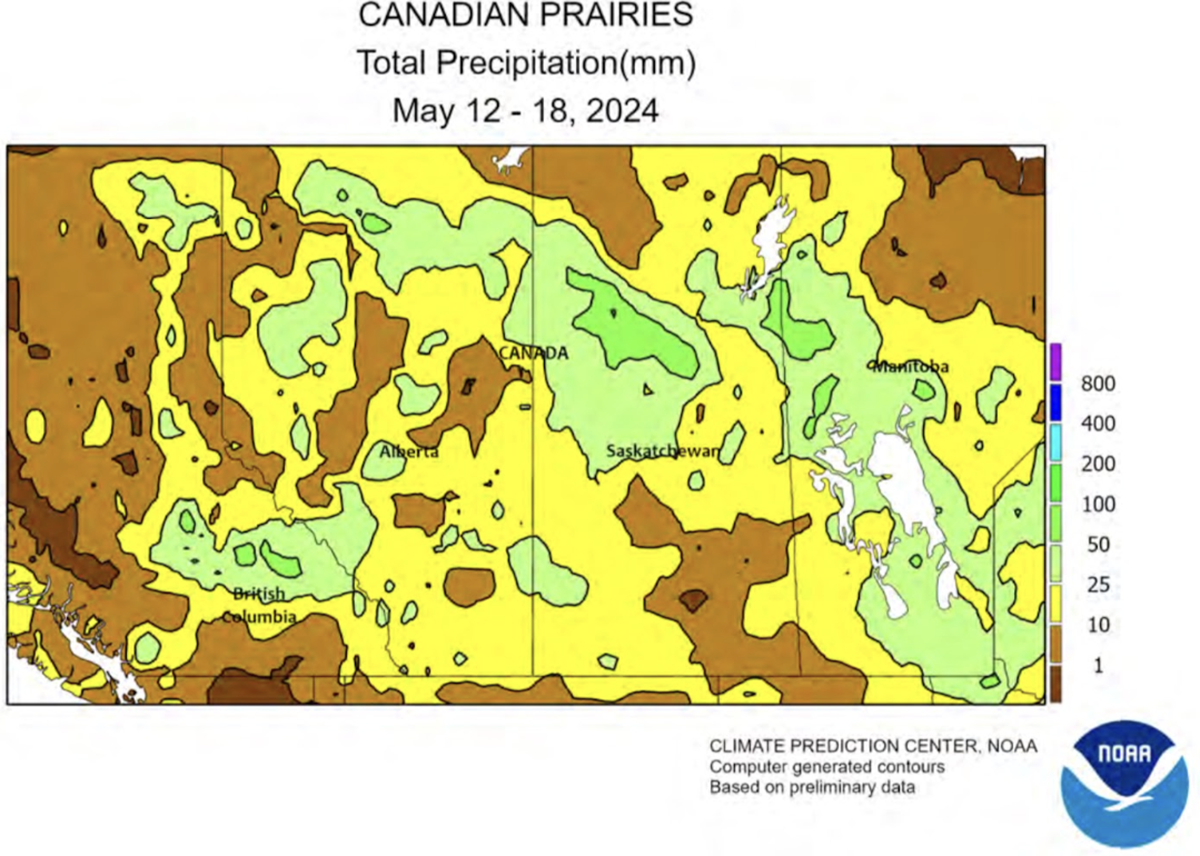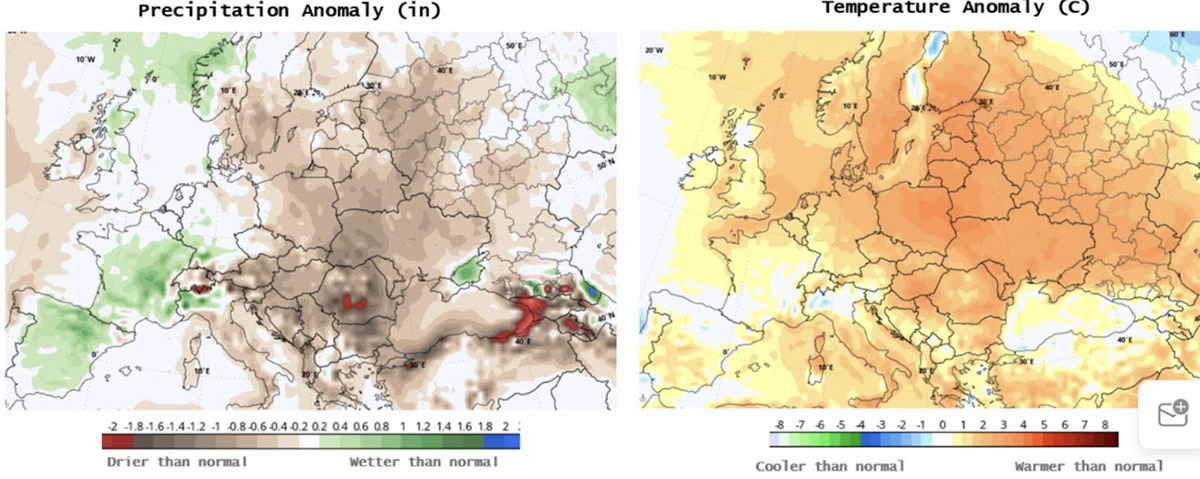May 23, 2024
Russia’s cold snap, cyclones in south India, and Aussie fingers crossed for rain – we take a look at this week’s weather and its impact at a key time for global pulse seedings.

Australian Bureau of Meteorology 8-day Rain Forecast
Queensland and central and northern New South Wales have received good levels of rainfall over the last few weeks, which bodes well for the planting of chickpeas set to take place over the next fortnight. The ABARES Climate, Water and Agricultural Report of May 23 suggests risks to production in Western Australia, South Australia, and western Victoria will continue after ‘deficient’ rainfall during April and May may have lowered soil moisture. However, the dry conditions have allowed for winter crop seedings and harvesting of summer crops to push on at pace. ABARES predicts that the eastern states (NSW, Queensland, and Victoria) and South Australia have a 40-60% chance of seeing above-average rainfall throughout June, July, and August, whereas Western Australia cropping regions have a 50-75% chance of above-average rainfall over the same period.

South-West Monsoon Progress Chart - India Meterological Department
This week, Cyclone 'Remal' moved into the Bay of Bengal and towards the east coast of India. The storm could potentially quicken the arrival of India's monsoons, but also has the potential to create drier conditions in early monsoon or even delay the monsoon should the cyclone continue eastwards to Myanmar. Last year's Kharif pulse crop suffered due to delayed and erratic rainfall, believed in part to be caused by cyclonic circulations that reduced moisture in the preceding weeks. On May 22, The Weather Channel concluded the South-West monsoon will 'arrive earlier and withdraw sooner than usual,' this year, setting a preliminary date of June 1 for the beginning of monsoon in Kerala. It also predicts the monsoon will bring 'warmer-than-usual' temperatures and 'higher-than-normal rainfall' arriving over a smaller number of rainy days.

NOAA data on precipitation across the Canadian Prairies
Canada has seen an improvement in rainfall in Saskatchewan, where the majority of lentil (approx. 95%) and pea (>50%) acres are planted – moisture conditions in the west-central cropland have been rated at 4% surplus, 86% adequate, 9% short and 1% very short. The rains have provided much-needed water in the ground after a period of concerning dryness, but have also delayed seeding progress. Overall summer seedings in Canada (grains, pulses and other crops) are currently lagging behind the five year average at 32% complete as of May 13, down 18% from the five-year average. During the week ending May 18, the National Oceanic and Atmospheric Administration (NOAA) showed light-moderate rain across the Canadian prairies, continuing the positive picture for soil moisture.

June Weather Anomaly Outlook Charts for Russia
Frosts in Central Russia may have damaged up to 500,000 ha of crops, including certain pulses, such as yellow peas and chickpeas. On May 8, Sergey Pluzhnikov, CEO of Russian Pulses Analytic expressed concerns to The Western Producer, saying that "because of frost and low precipitation in southern regions, conditions are far from brilliant." In the week between May 12-18, the USDA weekly weather and crop bulletin reports that the Southern District, where many chickpeas are grown, has seen rainfall at 34% (Volgograd) and 31% (Rostov) of normal levels. Temperatures for June are predicted to be between 1.5º and 3° higher than normal in the Central and Southern and Volga districts (see chart).